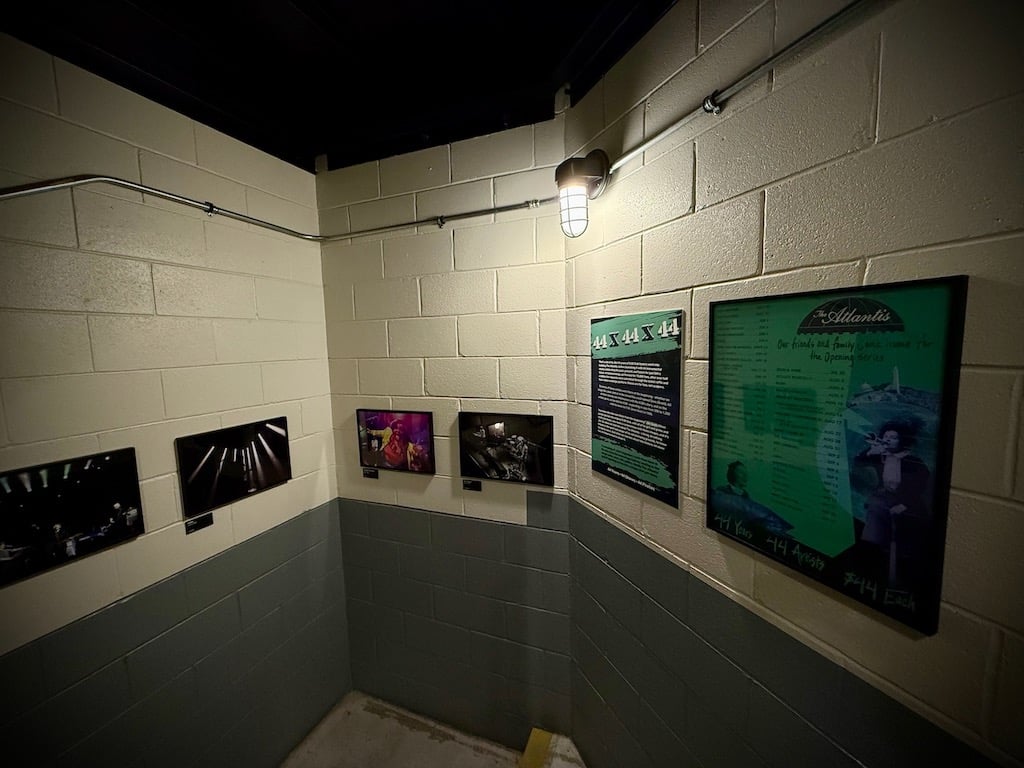In 1999, Adam Bernstein got his first gig as an obituary writer for the Washington Post in a way that screenwriters would probably reject as too on the nose: The previous occupant of the job died. Nine years later, Bernstein became head of the department, and he now occupies one of journalism’s most coveted positions.
Obituaries were once considered a newspaper-business backwater. But in recent years, readers have come to appreciate them as their own form of art, to the point where there was even a 2017 documentary film about the New York Times obit crew.
These days, it’s increasingly rare to find US papers that still have full-time staff dedicated to writing about the recently deceased. “My favorite movie of all time is Citizen Kane because it kind of speaks to what I have to do, which is to try and pretend that I understand these lives,” Bernstein says over a life-affirming meal of dumplings and soup at a Chinese place in Rockville. “As the movie points out, you can’t even begin to scratch the surface. I think of it like we’re dealing with glass from a broken mirror. My job is to put together these shards into something that resembles a mirror. ”
What kind of questions did the Post ask you when you applied for this job?
They were like, Why in the world would you want this thing? Why don’t you want to be Paris bureau chief? The Post’s reputation was local, local, local, and obituaries at the time tended to be focused on people who worked in the federal bureaucracy—you know, GSA systems analysts. I think of obituaries as an excuse to write about the world.
My interest was in arts and entertainment, so whenever I’d write about a movie star, the editors would give me a dirty look: Why can’t you just use [a wire story] on that? Because these are the ones that readers care about! Bonnie Franklin from One Day at a Time was one of the best-read obituaries for one year.
She was in people’s houses. It meant something personal when she died.
Exactly. What connects with people? My view was: How can you show people here what a human-rights activist in Peru was doing on behalf of their disappeared son? Or a film director from England who transformed movies—somebody who doesn’t suit the traditional Washington profile? The hardest challenge of obituaries, as a writer, is getting people to care about people they don’t think they care about.
That was something I loved about [retired New York Times obituary superstar] Margalit Fox’s pieces. They would often be about people you had never heard of but who just had astonishing lives.
That’s the sensibility I wanted to bring to the section. The Post went through this dark period for many years. They went through this whole “for and about Washington” strategy. Obituaries had terrific potential to [reach] audiences everywhere. It’s the one section that, outside of Washington politics, we don’t have that much competition but we still couldn’t kick butt. When Jeff Bezos took over, it was a whole new story. It was the best thing ever to happen for the obits desk.
When he was buying the paper, Bezos said one of the Post articles he liked was an obituary you wrote of 9:30 Club bouncer Josh Burdette.
Obituaries, as you can imagine, isn’t the most glamorous part of the paper. It was hilarious to see all these people wanting to just shake my hand. It was as if I were a leper who had been cured.
How do you choose who to write about?
Well, you’ve got to be dead. [Laughs.] It’s an art form more than a science. Some people you have to do because they’re super famous or important with a capital I. Other than that, we have a lot of discretion, which is a pleasure of the job. We have an advance list of about 700 people.
Is there anyone you have a great obit in the can for and you can’t wait for them to die?
Well, people will attack you if you talk about it that way. But we call it the kiss of life. The minute we have something ready on somebody, that bestows another ten years of life on them.
What’s it like to interview someone for their obituary?
I tend to discourage it, actually. I find that if somebody is really famous, they’re not going to tell you anything they didn’t say 9,000 times in previous interviews. [But I did do it for] my favorite obit that I’ve ever done, which was this guy Edward von Kloberg III.
He was a PR guy for war criminals, right? The guy who wore capes.
Yes. When I met him, he was forthright and honest about all the terrible things he had done, and he was absolutely charming about it, which added another layer of humanity.
I would imagine many people in Washington fancy they’d be a great obituary.
Everybody thinks that they’re important enough to warrant a big obit. But the best obituaries come in sort of understated. An obit’s a story; it’s not just a résumé. When I or the reporters discover something fascinating, that’s better than when you come in saying, “My relative was so important.” There’s a lot of that.
How do you handle it when people are upset the Post isn’t recognizing their importance?
People ask, “Why did you do this second-tier TV actor instead of my dad or my wife?” That happens a fair amount. All we can say is we think some would be far more interesting stories than others. I mean, there’s no question that if you spend enough time at it, I could make anybody’s life really worth reading about. But the question is: What’s news?
Is news what makes a good obituary?
The best obituaries are humane stories. They show the person in their full humanity—sometimes their attainments, sometimes their shortcomings. Sometimes it reveals their weaknesses or abject failings. The worst obituaries are always about celebrating the life. I can’t stand celebrations of life. These are news articles. They’re critical evaluations of people’s lives done in a humane way.
A lot of times, the impulse from writers when they think about an obit is to turn somebody into a marble statue who is to be worshiped and celebrated. I’m not out to say something nasty about anybody, but I just want to paint a far more complete picture whenever possible.
There used to be a lot of conventions about obituaries: avoiding causes of death, divorces, suicides, affairs.
Never been a problem for us. We’ve always insisted on accounting for all marriages, no matter how brief or long ago. If families don’t accept that, we tell them we can’t do the obituary.
If I can tell you a personal story: My grandfather was a character. I always imagined he had some secret early life—he’d been a spy or something. After he died, we discovered in the trunk of his Buick a box that contained his marriage certificate to someone who was not my grandmother. My mom didn’t know; her sister didn’t have any idea who this person was. Finally, they hunted down some old aunt who was about 152 and said, “Oh, you know, your grandfather, he was quite a ladies’ man.” He was a Jewish guy from Hoboken who went down to the University of Alabama in the early ’30s and dated this Southern belle whose family didn’t know what they hated more about him, that he was a Yankee or that he was a Jew, and made them get divorced. But it was the love of his life. He was never quite the same after that.
It’s always been very important to me that we account for all marriages. Because I hate the idea of erasing people out of lives. And I think ultimately it does a disservice to the person who died. I want people to understand that not every life is neat and easy and wonderful.
People must lie to you all the time.
People want to bully you. People try and smooth-talk you, and people try and hard-sell you. Your job is just to stick to the facts and probe as deeply as you can to put together as much as you can so it’s not just a statue. Then move on to the next person.
This article appears in the February 2020 issue of Washingtonian.



















